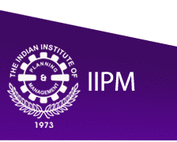With the Indian populace searching for alternative entertainment avenues to cricket and Bollywood, alternate sports and entertainment options are rapidly becoming growing generic platforms for marketers in India today While the movement in marketing away from cricket and Bollywood and towards other sports started almost 10 years ago, it is only in the last four years that this paradigm shift has truly begun to gather momentum. The foremost reason of this shift is of course the increasing disposable incomes available in the hands of millions of paying customers, who have been saturated by often pointless cricket and by the disappointing entertainment that is being churned out by Bollywood. A significant percentage of this customer base is constituted of a more urbanised ‘discerning customer’, who is no longer satisfied by plain vanilla entertainment, but who today, demands the loudest possible bang for his buck. As more money comes into other sports and alternate entertainment avenues and, by so doing, empowers these alternate entertainment options to market themselves better to this class of unsatisfied customers. The second is increase in the risk taking appetite of marketers in alternate entertainment avenues as they become a valuable generic platform. The relationship between marketers and alternate generic platforms is a unique one, for in effect, it is the monetary input of marketers that allows the creation of alternate platforms, which these marketers then themselves exploit to showcase their products. As more and more discerning customers shift away from cricket and Bollywood to these developing alternate platforms, the platforms themselves will become self sustaining, permanent, valuable and therefore of immense interest to other marketers, who will view these alternate avenues as high value propositions through which to market their products. Inevitably, the effect of these self sustaining alternatives will be to support a vibrant ecosystem based on the financial wherewithal of an increasingly vociferous class of paying customer, where all stakeholders will benefit from symbiotic relationships. The third important change that is already taking place is recognition of the fact that neither cricket nor Bollywood offer any brand the chance of uncluttered brand recall. For instance, while the most ardent of cricket lovers will be hard pressed to name either the sponsor of the last India series played in India, or the name of the various sponsors on the shirts of an IPL team, or the brands that are endorsed by Shah Rukh Khan, all football fans of this country will unhesitatingly identify ONGC as the sponsor of the I-league. Brand recall is the most fundamental need for any marketer spending money on the promotion of his products, and where there is no brand recall, there is little point expending money. With cricket and Bollywood having reached their saturation points, more and more marketers are beginning to look beyond these two avenues for the advertisement of their products. The entry of Monet Ispat and Videocon into Boxing, of Coco Cola and Musli Power into Football, of the UB Group into Formula 1, and of MandM into Basketball are but a few examples of the growing recognition for alternate platforms. Pertinently, even in this paradigm shift, there is little change in the fundamental tenets of advertising. Recognised brands entering into other sports are doing so through sports with which their brand shares a connection. For instance, Coca Cola (a youth brand) sponsors the energy and excitement of school football while Monet Ispat (a steel company) sponsors the toughness and solidity of boxing to leverage their associations with these alternate platforms for advertising. Of course, bring young platforms, they offer advertisers the opportunity to connect at low costs, thereby promising higher returns on investment and satisfying the basic commercial objective of each brand. In conversation with Vareen RayFor more articles, Click on IIPM Article.Source : IIPM Editorial, 2010. An Initiative of IIPM, Malay Chaudhuri and Arindam chaudhuri ( Renowned Management Guru and Economist). For More IIPM Info, Visit below mentioned IIPM articles.
IIPM B-School Detail
IIPM makes business education truly global
IIPM’s Management Consulting Arm - Planman Consulting
Arindam Chaudhuri (IIPM Dean) – ‘Every human being is a diamond’
Arindam Chaudhuri – Everything is not in our hands
Planman Technologies – IT Solutions at your finger tips
Planman Consulting
Arindam Chaudhuri's Portfolio - he is at his candid best by Society Magazine
IIPM ranked No 1 B-School in India
domain-b.com : IIPM ranked ahead of IIMs
IIPM: Management Education India
Prof. Rajita Chaudhuri's Website---------------------------------------------------------------------------------------------------------------
The way retailers are leapfrogging in terms of leveraging IT presents an opportunity no less than a goldmine unearthed for vendors It is difficult to believe but the Universal Product Code (UPC) was introduced into retail just 35 years ago. This first product identifier transformed what were manual processes in a retail outlet to technology adoption starting with the sales terminals. Making the sales process efficient and painless for a consumer is always a critical measurement of the buying experience. Since introduction of the UPC a level of automation exists in literally all aspects of interaction between manufacturers, suppliers and consumers. The industry has continued to refine the UPC and there are many other codes (some subsets or supersets of the UPC) including: National Drug Codes (NDC), European Article Number (EAN), Electronic Product Code (EPC) & Quick Response Code (QR). Identification of a retail item utilising one of these codes is critical for all retail business systems. These codes provide the first insight into what the ‘product’ is. However behind these electronic identifiers is a litany of other data critical to accurate shipping and receiving of product and also accurate financials including store / department / depot P&L’s. The introduction of UPC’s was in no way a panacea for getting the information required to make good business decisions. The management of the information that drives a retail business enterprise is still a great challenge in the industry. There has been a focus from many technology vendors to provide software to assist in data management. There is software that facilitates data matching, software to perform a level of data cleansing, software to do data transformation per a predetermined set of rules. Business analytics has created an industry for software providers, hardware providers and solutions consultants. However, all the automation in the world does not eliminate errors because at every step there is a person required to look at information and make a decision. For more articles, Click on IIPM Article.Source : IIPM Editorial, 2010. An Initiative of IIPM, Malay Chaudhuri and Arindam chaudhuri ( Renowned Management Guru and Economist). For More IIPM Info, Visit below mentioned IIPM articles.
IIPM B-School Detail
IIPM makes business education truly global
IIPM’s Management Consulting Arm - Planman Consulting
Arindam Chaudhuri (IIPM Dean) – ‘Every human being is a diamond’
Arindam Chaudhuri – Everything is not in our hands
Planman Technologies – IT Solutions at your finger tips
Planman Consulting
Arindam Chaudhuri's Portfolio - he is at his candid best by Society Magazine
IIPM ranked No 1 B-School in India
domain-b.com : IIPM ranked ahead of IIMs
IIPM: Management Education India
Prof. Rajita Chaudhuri's Website---------------------------------------------------------------------------------------------------------------
 TECHNICAL SPECIFICATIONS:
• Expandable Memory upto 8GB
• Price: Rs.5,000
SERVING A DUAL PURPOSE: The latest offering from the recent entrant into the Indian handset market, Wynncom is a perfect mix of utility and multimedia. The Y50 QWERTY phone has features like pre-loaded AIO messenger, social networking applications and a lot more. In fact, the handset also falls easy on the pocket and is quite easy to use.
Salesforce.com is making a killing with its cloud-based CRM solutions, but the latest threat from software giant Microsoft could end up spoiling the party Thankfully so (for sales teams), that stage in technology evolution hasn’t arrived yet – the stage when you can program a computer system to do your sales functions. However, the solutions being offered by Salesforce.com promise a major transformation in the way marketing is done in today’s enterprise. And their weapon for this is cloud computing, highly hyped and much less understood today’s technology world. Gartner calls it a phenomenon that could be as influential as e-business itself. Daryl Plummer, Managing VP and Gartner Fellow, comments, “During the past 15 years, a continuing trend toward IT industrialization has grown in popularity as IT services delivered via hardware, software & people are becoming repeatable and usable by a wide range of customers and service providers.” Commoditisation of software is compelling a number of IT companies to launch cloud computing offerings. Jeremy Cooper, Regional VP, Marketing, Asia Pacific, comments, “These companies (that are announcing plans for cloud computing) are looking to stay relevant. Salesforce.com has an overarching positioning statement to define its offerings – Success, not software. It offers its customers the benefit of moving their IT infrastructure off premise to the cloud. Lee Thomson, Senior VP, Corporate Sales, Asia Pacific, Salesforce.com, comments to 4Ps B&M, “Think about it like the iTunes. There are a lot of songs available, people pick and select the ones that they want to have access to.” Similarly, Salesforce.com offers customers their chosen applications after proper accreditation on its cloud. Some applications are from Salesforce and some are from third party vendors. This brings down IT costs, enhances productivity and provides easy scalability, as Salesforce charges them on a per subscriber basis. Forrester did a study commissioned by Salesforce for the latter’s customers and concluded that “risk adjusted ROI for the customer organization is 727% with a near- immediate breakeven point after deployment.” For more articles, Click on IIPM Article.Source : IIPM Editorial, 2010. An Initiative of IIPM, Malay Chaudhuri and Arindam chaudhuri ( Renowned Management Guru and Economist). For More IIPM Info, Visit below mentioned IIPM articles.
IIPM B-School Detail
IIPM makes business education truly global
IIPM’s Management Consulting Arm - Planman Consulting
Arindam Chaudhuri (IIPM Dean) – ‘Every human being is a diamond’
Arindam Chaudhuri – Everything is not in our hands
Planman Technologies – IT Solutions at your finger tips
Planman Consulting
Arindam Chaudhuri's Portfolio - he is at his candid best by Society Magazine
IIPM ranked No 1 B-School in India
domain-b.com : IIPM ranked ahead of IIMs
IIPM: Management Education India
Prof. Rajita Chaudhuri's Website---------------------------------------------------------------------------------------------------------------
While a strong brand in a company’s portfolio not only guarantees an excellent return on its share, it also helps in minimising the investment risk. However logical this might sound, the fact is that a majority of shareholders globally are still faced with a dilemma on how much of a brand is too much and how less is too less. 4Ps B&M brings the answers in this exclusive report It was the late 1970s when magazines, tabloids and dailies across the globe – as if acting conspiratorially – bombarded the world with articles peddling the importance of brands. Brands were suddenly looked upon as a sure shot way, by companies, to get through the growing competition and rampant product proliferation. These intangible assets all at once achieved fame and were purported to be the lethal weapons that could bring unrivaled powers to a firm’s arsenal. Many, in fact, lived up to what was being expected out of them. For instance, brands such as Google, McDonald’s, WalMart, et al, have today virtually become the synonyms for their respective industries, thanks to their brand strength and to investments that went in to create such brands. But, despite their glory run that continues till date, it’s quite interesting, if not ironic, to note there have been critics (for instance, Canadian author Naomi Klein’s No Logo and American investigative journalist Eric Schlosser’s Fast Food Nation) that have challenged the sensibility of brand orientation on several occasions. They have not only questioned the mighty existence of brands, but at times have argued upon that the concept of brands is just another marketing gimmick and nothing else. Be that as it may, do brands now really matter to shareholders, the owners of corporations? 4Ps B&M cut across the industry to dig up expert opinions – and ran into a deluge. “A brand is arguably the single most important intangible asset that has great potential in terms of opportunity growth for any company. But as far as investors are concerned, they only consider brands when it comes to choose between two companies that are equal in size and provide equal returns. Else brands really don’t matter to them,” says Alok Bharadwaj, Sr. VP, Canon to 4Ps B&M. Research, though, doesn’t support that line of thought. While a strong brand in a company’s portfolio not only guarantees an excellent return on its share, it also helps in minimising the investment risk. The presence of brands has been seen to definitely enhance investors’ confidence on the company, which in turn stimulates and encourages further investment. A research done by the London based brand consultancy FutureBrand (part of the Interpublic Group of Companies) in 2003 on FTSE (FTSE calculates over 120,000 end of day and real-time indices covering more than 80 countries and all major asset classes) proved that companies with strongly branded portfolios consistently outperform their weakly branded counterparts (see chart). Even Brand Finance’s Global Intangible Finance Tracker across 53 national stock markets covering more than 37,000 companies shows that brands add to a third of the world’s wealth. Unni Krishnan, MD, Brand Finance India communicates a similar view to us. As per him, strong brands impact both the demand and supply curves to add value to the business, which in turn significantly adds to the shareholders wealth. For more articles, Click on IIPM Article.Source : IIPM Editorial, 2010. An Initiative of IIPM, Malay Chaudhuri and Arindam chaudhuri ( Renowned Management Guru and Economist). For More IIPM Info, Visit below mentioned IIPM articles.
IIPM B-School Detail
IIPM makes business education truly global
IIPM’s Management Consulting Arm - Planman Consulting
Arindam Chaudhuri (IIPM Dean) – ‘Every human being is a diamond’
Arindam Chaudhuri – Everything is not in our hands
Planman Technologies – IT Solutions at your finger tips
Planman Consulting
Arindam Chaudhuri's Portfolio - he is at his candid best by Society Magazine
IIPM ranked No 1 B-School in India
domain-b.com : IIPM ranked ahead of IIMs
IIPM: Management Education India
Prof. Rajita Chaudhuri's Website---------------------------------------------------------------------------------------------------------------
 Gurmeet Singh (Head - Business Planning, Vice President), Hitachi India
Considering that last year has proved an unusually good year for the industry in comparison to the last five years, what shall be the growth drivers for this year, according to you? And how much increase in demand do you expect (across categories) as compared to last year?
This year the market is looking more aggressive than last year. Therefore, the industry would grow by 30-40% as compared to last year. The industry is progressing from a luxury product image to a diversified market due to changes in lifestyle and rapid economic growth. Early summer, low penetration rates and increasing disposable incomes will assist in good industry growth.
Like many players in your segmnet, has Hitachi India also scaled up its production levels in order to meet the resurgence of demand? How much investment have you made in this regard?
Last year, we had inaugurated our third plant in Kadi (Gujrat). The new facility is spread on a plot of 85000 Sq. Mtr. with approximately 35000 sq. mtrs. of Industrial shed, built in a record time of only 7 ½ months. The total investment amounted to approximately Rs.50 crores. The plant is state of the art and equipped with advanced machinery and testing labs. With its new plant, the production capacity will increase to 4.0 lakh units per annum.
Are you making any new changes in your marketing strategies for this summer as compared to last year? What marketing budgets have you earmarked for this year and what shall be the major areas of your marketing spends?
We have increased our marketing spends to 35% over the last year. Hitachi keeps on innovating and introducing the best in class products to the Indian market every year with new advertising campaigns. This year, we have introduced another innovation - Direct Efficient Technology in all air-conditioners, which makes them sensible & intelligent and provides high energy efficiency, efficient & silent cooling and consistent comfort. We have introduced new range of split AC - i-TEC (Tr. 1.5) based on DC inverter technology and ACE Followme (Tr. 0.9, 1.2, 1.5 & 2.0).
|




 RSS Feed
RSS Feed